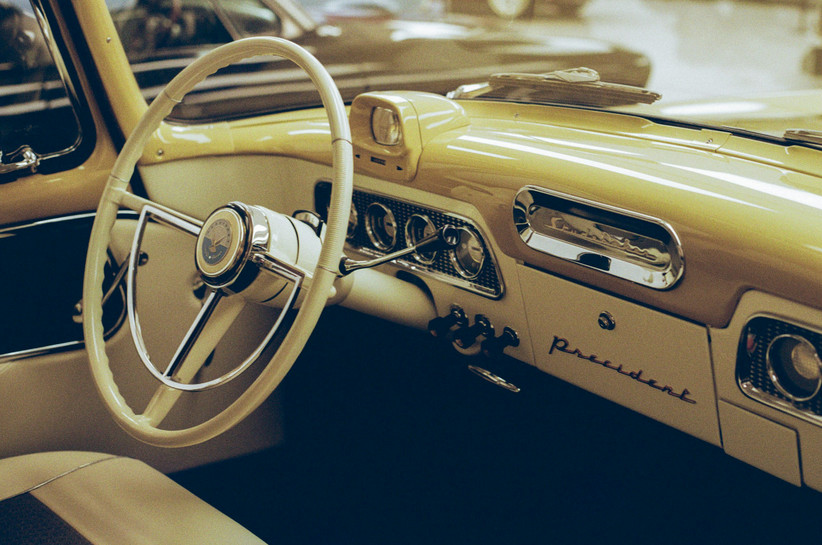When it comes to upgrading your classic car’s radio, two brands often come up in conversation among die-hard restoration fans: Antique Automobile Radio (AAR) and Retrosound. Both aim to stay true to vintage aesthetics while integrating modern features, but they approach the balance from different angles. Here's a breakdown of how they compare—and which might fit your project best.
Brand Philosophy & Authenticity
Antique Automobile Radio (AAR) was founded to produce radios that look exactly like the originals, but with hidden modern performance. AAR units use reproduction faceplates, knobs, and analog dials that mimic stock radios, and many models eschew visible digital displays altogether—keeping that original “radio at rest” look. Their engineering behind the scenes adds AM/FM stereo, Bluetooth, RCA outputs, and modern amplification all while preserving that classic aesthetic.
Retrosound, on the other hand, builds around more flexible aesthetics. Their RetroRadio platform and others allow you to mix and match bezels, knobs, and dials for an OEM or custom look. They tend to be more openly digital in appearance (or at least hybrid), with LCD displays, customizable lighting, built-in Bluetooth, and a feature set that leans modern.
If you care deeply about show authenticity—having no visible LCD or LED elements when the radio is off—AAR often leads. If you value flexibility, future updates, and visible tech, Retrosound is often more forgiving and modular.
Power & Performance
AAR units are designed with modest but capable output. Many AAR radios deliver 180 watts total (e.g. 4 × 45 watts) via solid MOSFET amplification. Because many owners place value on clean stock appearances, their design trades off maximum headroom for factory fidelity. They also tend to keep shallow cases so they clear dash cavities and ducting.
Retrosound radios tend to offer more “headroom” and more aggressive specs. For example, the Retrosound Motor 1B offers a 275-watt amplifier, Bluetooth, 30 presets FM/AM, and full streaming integration. Their Model Two includes built-in Bluetooth, USB input, subwoofer output, and selectable colors for backlighting.
If your car is large or noisy, or you plan to drive with external amplifiers and subs, Retrosound’s greater power flexibility often gives you more headroom without distortion. AAR’s strength is better in moderate systems where elegance and dash fit are prioritized.
Features & Expandability
AAR radios typically include:
-
Bluetooth streaming and hands-free calling
-
AM/FM stereo
-
RCA outputs (left, right, subwoofer)
-
Tone, balance/fade controls
-
Factory-appearance dials and knobs
-
Preset station memory
-
Shallow chassis to fit tight dash cavities
-
LED backlights designed to mimic vintage glow
Retrosound, in contrast, embraces more “visible modernization.” Their radios offer:
-
Built-in Bluetooth, USB, SD card inputs
-
Full LCD or RGB displays with adjustable lighting
-
RDS (station/song metadata)
-
Greater number of presets
-
Patented mounting systems (InfiniMount) that allow shaft offsets, bracket mounting, etc.
-
Stronger pre-outs, built-in sub outputs, more internal tuning flexibility
If you plan to add amps, subs, or upgrade later, Retrosound gives more internal room, whereas AAR gives just enough for moderate expansion while maintaining show authenticity.
Which One Suits You?
Here’s a comparison guideline:
-
Go AAR if
• You want factory looks, minimal visible digital elements
• You’re building a show car or concours restoration
• You have dash space constraints and need shallow depth
• Your audio goals are classy and balanced—not extreme loudness -
Go Retrosound if
• You want maximum flexibility and modern features right out of the box
• You plan to expand with subs, amplifiers, or multiple zones
• You don’t mind a visible modern display or backlighting
• You want ability to customize (bezels, knob styles, lighting)
Final Thoughts
Antique Automobile Radio and Retrosound both deliver strong, desirable solutions for classic car audio. AAR prioritizes faithful reproduction and subtlety, while Retrosound leans into flexibility, feature richness, and upgradeability. If your priority is a radio that disappears into the dash but still performs modern functions, AAR is the better fit. If you want a radio that embraces the future while honoring the past, Retrosound may be more your style.
At Vintage Car Radio, we often steer enthusiasts toward AAR for show-level authenticity, and toward Retrosound for builds where functionality, expandability, and display features matter most. Either way, you're getting a radio that understands the classic car world isn’t built around compromises—but thoughtful tradeoffs.



